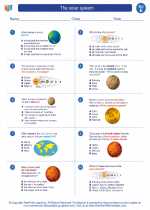What Causes Monsoons?
Monsoons are caused by the temperature difference between the land and sea. During the summer, the land heats up faster than the ocean, creating an area of low pressure over the land. Meanwhile, the ocean remains relatively cooler, resulting in higher pressure. This temperature difference causes the warm, moist air from the ocean to move towards the lower pressure area over the land, bringing heavy rainfall.
Types of Monsoons
There are two main types of monsoons: the summer monsoon and the winter monsoon. The summer monsoon brings heavy rainfall and occurs when the warm, moist air from the ocean moves onto the land. The winter monsoon, on the other hand, brings dry and cool air from the land to the ocean, resulting in less rainfall.
Impact of Monsoons
Monsoons play a crucial role in the climate and agriculture of the regions they affect. The heavy rainfall brought by the summer monsoon is vital for the cultivation of crops, while the winter monsoon provides relief from the heat and replenishes groundwater reserves.
Monsoons Around the World
While monsoons are commonly associated with the Indian subcontinent, they also occur in other parts of the world such as Southeast Asia, parts of Africa, and even in the southwestern United States. Understanding the patterns and impact of monsoons is essential for understanding the climate and ecosystems of these regions.
.◂Science Worksheets and Study Guides Fifth Grade. The solar system

 Worksheet/Answer key
Worksheet/Answer key
 Worksheet/Answer key
Worksheet/Answer key
 Worksheet/Answer key
Worksheet/Answer key
 Vocabulary/Answer key
Vocabulary/Answer key
 Vocabulary/Answer key
Vocabulary/Answer key
 Vocabulary/Answer key
Vocabulary/Answer key
